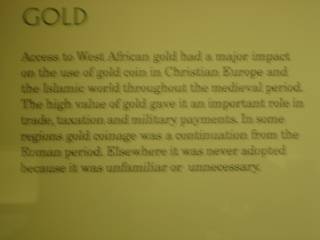
War, Finance, and the State, together in one place. The Bank of England is on the left. The Royal Exchange on the right. And in the background the highrises of the City and the London Stock market. It's the convergence of war finance. The picture suggests a story, which I've told in my Whiskey and Gunpowder essay. More pictures are below. The object of this excursion into the City was to visit the museum at the Bank of England. Unfortunately, you can't take pictures inside the museum. But I did take notes. As you pass into the entrace of the museum, you're greeted with animatronic 17th century members of parliament having an argument about money. One says, "The use of paper money must always be secondary to the precious metals and must flow from credit. And credit must, of its nature, rise out of the opinion that the paper money was issued in due proportion to the quanity of coins." "Rubbish," says the other. Our periwigged, latter-day hard money enthusiast is not to be deterred. He concludes, "The value of paper money must always be dependent on the possibility of converting it into silver and gold." The prospects of the Bank itself were in doubt with the rise of the South Sea Company, which was capitalized by future trade revenues, rather than gold. Land banks also competed with the BOE for some time. But in 1844 the BOE was granted the sole monopoly for issuing legal tender bank notes as means of exchange (money). There were times, when England was not at war, that the Bank notes WERE convertible for gold. A gold standard. But war and gold standards are mutually exclusive. And so the gold standard was abandoned. What conlcusion does the Bank's museum draw from this? The first period where bank notes were NOT convertible for gold was between 1797 and 1821 (one of England's many wars with France). The period was known as "The Restriction." A museum exhibit surmises, "The restriction had shown that ultimately the Bank's credit did not depend on the convertability of its notes into gold, but on confidence." For more on this, see my Whiskey and Gunpowder essay. For more luscious quotes from the Bank of England's museum and my walking tour of the City, scroll down to the pictures and captions below.

























